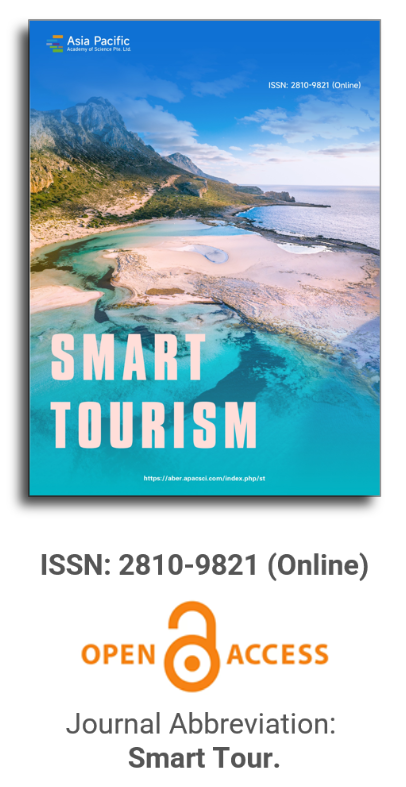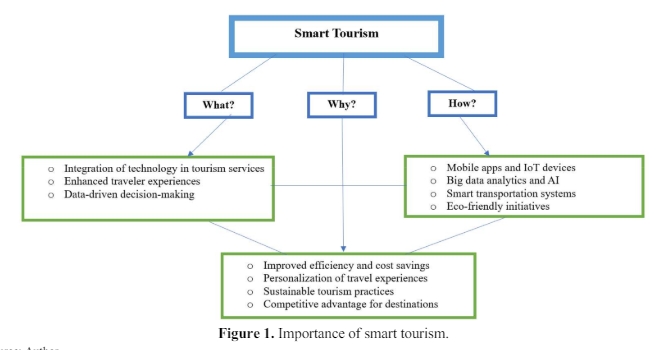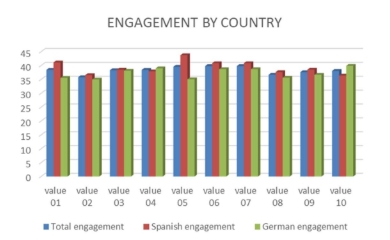


Virtual accessibility in smart tourism destinations: The cases of Curitiba and Malaga
Vol 2, Issue 1, 2021
Download PDF
Abstract
Smart tourism destinations innovate using technology as a management and planning tool, providing information for managers, community and tourists. The search for sustainable development occurs through participatory management, in which mobility, accessibility, and quality of life are allied to experiences in the destination, in order to satisfy residents and tourists. Therefore, this work aims to evaluate Curitiba and Malaga, in a comparative way, as an intelligent tourist destination, based on criteria of virtual accessibility. To this end, use was made of qualitative, descriptive and exploratory methods whose main data collection techniques were: Bibliographic and documental research, recording by means of an investigation script on tourism websites. The analyses were carried out by means of a theoretical-practical pairing. It was observed that both cities, Curitiba and Malaga, are developing actions with the objective of being recognized as intelligent tourist destinations, as to the criteria of virtual accessibility.
Keywords
References
- Santos SR, Gândara JMG. Smart destination: Building a model of assessment based on indicators for planning, management and control in cultural and historic heritage destination, analyzing the city of São Luís (Maranhão, Brasil). Cultur—Revista de Cultura e Turismo 2016; 10(2): 69–79.
- Pinto MJA, Nakatani MSM. The role of urban planning in the development of curitiba into a smart destination. Revista Turismo & Cidades 2019; 1(2): 1–20.
- Perles-Ribes JF, Ramón-Rodríguez A, Vera-Rebollo JF, et al. The end of growth in residential tourism destinations: steady state or sustainable development? The case of Calpe. Current Issues in Tourism 2017; 21(12): 1355–1385.
- Ivars J, Solsona J, Giner D. Tourism management and information and communication technologies (ICTs): The new smart destinations approach. Documents d’Anàlisi Geogràfica 2016; 62(2): 327–346.
- Instituto Valenciano de Tecnologias Turísticas [Internet]. Destinos Turísticos Inteligentes: Manual operativo para la configuración de destinos turísticos inteligentes (Spanish) [Smart tourist destinations: Operational manual for the configuration of intelligent tourist destinations]. 2015. Available from: https://es.link edin.com/in/invattur.
- Gil AM, Fernández B, Herrero JL. The smart tourism destination and the territorial intelligence: Problems and opportunities. Investigaciones Turísticas 2015; 10(2): 1–25.
- Vargas-Sánchez A. Exploring the concept of smart tourist destination. Enlightening Tourism—A Pathmaking Journal 2017; 6(2): 178–196.
- Conselho Paranaense de Turismo [Internet]. Paraná Turístico 2026: Pacto para um destino inteligente (Spanish)[Paraná Tourist 2026: Pact for an intelligent destination]. 2016. Available from: http://www. pa-ranaturistico.com.br/sobre.
- Ascher F. Os novos princípios do urbanismo (Spanish) [The new principles of urbanism]. São Paulo: Romano Guerra; 2010.
- César PAB. Tourism urbanization: Draft for the definition of a category of social space. Turismo em Análise 2010; 21(2): 406–420.
- Raigón JMC, López RS, Pulido CO. From the last “City of God” to the “Smart City”. Turydes-Turismo y Desarrollo 2015; 8(18): 1105–1112.
- Santos SR, Souza Neto VR, Pereira LRS, et al. Smart Destination: Accessibility at the heritage city of São Luís-Maranhão, a study about online reputation based in TripAdvisor. Marketing and Tourism Review 2016; 1(2): 1–27.
- Cruz MM. Curitiba: Um destino turístico inteligente? (Spanish) [Curitiba: An Intelligent Tourist Destination?]. [Master’s thesis]. Curitiba, Brazil: Universidade Federal do Paraná; 2018.
- Santos SR, Gândara JM, Leite ARL, et al. Smart destination and the tourist experience: Case of a cultural and heritage destination in the Northeast of Brazil. Marketing and Tourism Review 2019; 4(2): 1–33.
- Álvarez UC, Rodríguez JAG, Duarte LMM. Smart tourism destinations: Strategy for local development in poor countries? TURyDES: Revista Turismo y Desarrollo local 2017; 10(22): 59–64.
- Carvalho SMS. Tourism accessibility in Parque Nacional Serra da Capivara-PI. Turismo em Análise 2012; 23(2): 437–463.
- Cassapian MR, Rechia S. Leisure for all?-Accessibility analysis of some parks in Curitiba, Parana State. Cadernos Brasileiros de Terapia Ocupacional 2014; 22(1): 25–38.
- Vieira R, Morastoni R. Quality of sidewalks in the city of Camboriú/SC: In search of sustainable mobility and accessibility to tourist area. Revista Brasileira de Pesquisa em Turismo 2013; 7(2): 239–259.
- Rodriguez-Sanchez MC, Martinez-Romo J. GAWA—Manager for accessibility Wayfinding apps. International Journal of Information Management 2017; 37(6): 505–519.
- Cañadas JA, Sánchez RG. Accesibilidad web: Un importante paso en el turismo para personas com discapcidad (Spanish) [Web accessibility: An important step in tourism for people with disabilities]. Turydes—Turismo y Desarrollo 2014; 7(17): 625–632.
- Michopuolou E, Buhalis D. Information provision for challenging markets: The case of the accessibility requiring market in the context of tourism. In-formation & Management 2013; 50(1): 229–239.
- Sakiyma WF, Souza SR. Botanical Garden of Curitiba-PR, Brazil: possibility of inclusion of the visually impaired. Cultur: Revista de Cultura e Turismo 2016; 10(1): 112–142.
- Brea JAF, González MEA, Vila TD. La accesibilidad como oportunidad de mercado en el management de destinos turísticos (Spanish) [Accessibility as a market opportunity in the management of tourist destinations]. Revistas de Análisis Turísticas 2008; 5(1): 30–45.
- Darcy S. Inherent complexity: Disability, accessible tourism and accommodation information preferences. Tourism Management 2010; 31(6): 816–826.
- Martinez AMS, Monserrat-Gauchi J. Accessibility as the requirement of the official websites. Analysis of the availability of the official tourist websites of the Spanish Mediterranean coast. Tendenciais e Innovación em Comunicación 2016; 12: 69–90.
- W3C. Web Accessibility Guidelines (WCAG) 2.0 [Internet]. 2014. Available from: https://www.w3. org/.
- Laville C, Dionne J. In: Heloísa Monteiro LMS, Settineri F (translators). A construção do saber: Manual de metodologia da pesquisa em Ciências Humanas (Spanish) [The construction of knowledge: Handbook of Research Methodology in the Human Sciences]. Porto Alegre: Artmed; 1999.
Supporting Agencies
Copyright (c) 2021 Diogo Lüders Fernandes, Enrique Torres Bernier
License URL: https://creativecommons.org/licenses/by/4.0

This site is licensed under a Creative Commons Attribution 4.0 International License (CC BY 4.0).

Prof. Hung-Che Wu
Nanfang College, Guangzhou
China
Indexing & Archiving
Asia Pacific Academy of Science Pte. Ltd. (APACSCI) specializes in international journal publishing. APACSCI adopts the open access publishing model and provides an important communication bridge for academic groups whose interest fields include engineering, technology, medicine, computer, mathematics, agriculture and forestry, and environment.



.jpg)
.jpg)

.jpg)

